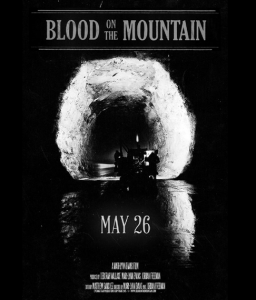Several years in the making, “Blood on the Mountain” has finally premiered in New York City. The documentary examines the cycle of exploitation of people and environment by West Virginia’s coal industry highlighting Massey Energy, a coal firm that was based in Richmond.
The final cut of the film was released publicly May 26 at Anthology Film Archives as part of the “Workers Unite! Film Festival” funded in part by the Fund for Creative Communities, the Manhattan Community Arts Fund and the New York State Council of the Arts.
Directed by Mari-Lynn Evans and Jordan Freeman, the film shows that how for more than a century, coal companies and politicians kept coal workers laboring in unsafe conditions that killed thousands while ravaging the state’s mountain environment.
As Bruce Stanley, a lawyer from Mingo County, W.Va. who is interviewed in the film and has fought Donald L. Blankenship, the notorious former head of Massey Energy, says, there isn’t a “War on Coal,” it is a “war waged by coal on West Virginia.”
When hundreds of striking workers protested onerous and deadly working conditions in the early 1920s, they were met with machine guns and combat aircraft in a war that West Virginia officials kept out of history books. They didn’t teach it when I was in grade school there in the 1960s. I learned about the war in the 1990s.
The cycle of coal mine deaths,environmental disaster and regional poverty continues to this day. In 2010, safety cutbacks at a Massey Energy mine led to the deaths of 29 miners in the worst such disaster in 40 years. Mountains in Central Appalachia, including southwest Virginia, continue to be ravaged by extreme strip mining.
As Jeff Biggers said in a review of the movie in the Huffington Post:
“Thanks to its historical perspective, Blood on the Mountains keeps hope alive in the coalfields — and in the more defining mountains, the mountain state vs. the “extraction state” — and reminds viewers of the inspiring continuum of the extraordinary Blair Mountain miners’ uprising in 1921, the victory of Miners for Democracy leader Arnold Miller as the UMWA president in the 1970s, and today’s fearless campaigns against mountaintop-removal mining.”
The movie (here is the trailer) is a personal mission for me. In 2013, after my book “Thunder on the Mountain, Death at Massey and the Dirty Secrets Behind Big Coal,” was published by St. Martin’s Press, Mari-Lynn Evans called me and said she liked the book and wanted me to work with her on the movie project. She is from a small town in West Virginia a little south of where I spent several years as a child and thought some of my observations in the book rang true.
I drove out to Beckley, W.Va. for several hours of on-camera interviews. Over the next two years, I watched early versions, gave my criticisms and ideas and acted as a kind of consultant. Mari-Lynn’s production company is in Akron and I visited other production facilities in New York near the Brooklyn Navy Yard.
Interesting work if you can get it. My only forays into film making before had been with my high school film club where he videographed a coffin being lowered into a grave (in West Virginia no less). I was greatly impressed when I saw the movie at its New York premiere.
Mari-Lynn and Jordan have been filming in the region for years. They collaborated on “The Appalachians,” an award-winning three-part documentary that was aired on PBS a few years ago and on “Coal Country” which dealt with mountaintop removal strip mining.
They and writer Phyllis Geller spent months detailing how coal companies bought up land on the cheap from unwitting residents, hired miners and other workers while intimidating them and abusing them, divided communities and plundered some very beautiful mountains.
Upper Big Branch is just a continuation of the mine disasters that have killed thousands. The worst was Monongah in 1907 with a death toll of at least 362; Eccles in 1914 with 183 dead; and Farmington in 1968 with 78 dead (just a county over from where I used to live).
By 2008 while Blankenship was CEO of Massey, some 52 miners were killed. Then came Upper Big Branch with 29 dead in 2010.
At least 700 were killed by silicosis in the 1930s after Union Carbine dug a tunnel at Hawks Nest. Many were buried in unmarked graves.
While state regulation has been lame, scores West Virginia politicians have been found guilty of taking bribes, including ex-Gov. Arch Moore.
The movie is strong stuff. I’ll let you know where it will be available. A new and expanded paperback version of my book is available from West Virginia University Press.
Blankenship is scheduled to go on trial on federal charges related to Upper Big Branch on July 13.



